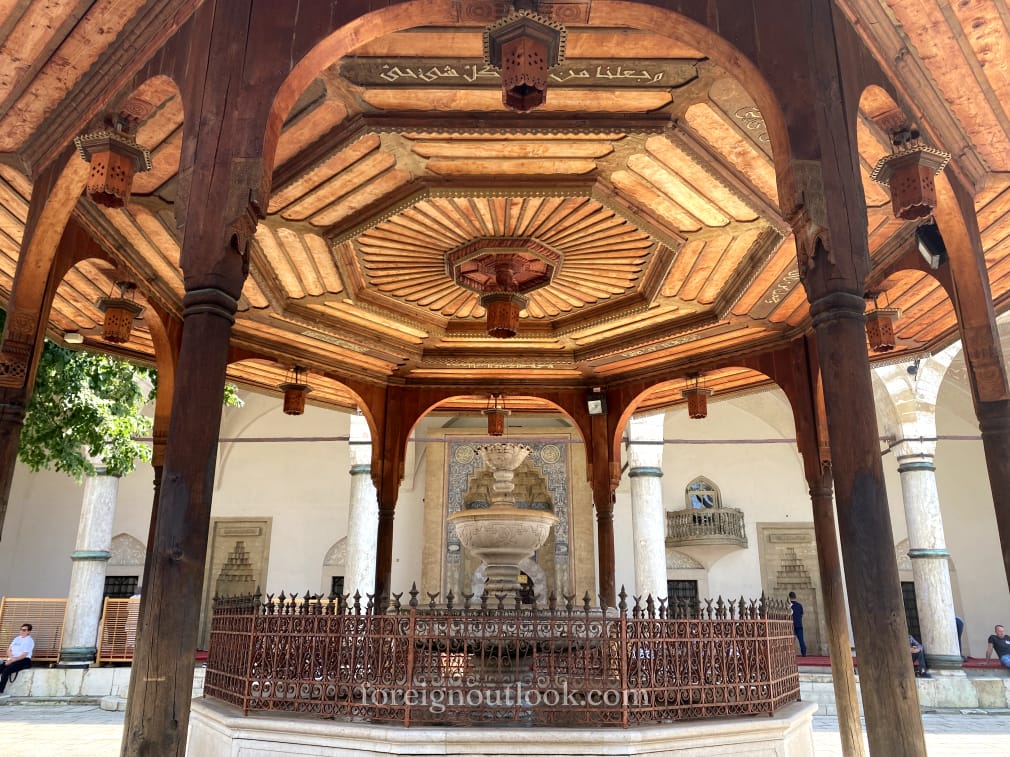Sprinkled throughout the Old Town, an odd combination of styles and elements stand out through the architecture in Sarajevo. This includes a mix of Byzantine, Ottoman, and Moorish influences. From end to end, the capital’s intriguing landscape is one of the many appeals of this diverse city.
1. Moorish Architecture in Sarajevo
One of the most unique sites we found sits at the edge of the Old Town, facing the notorious House of Spite across the river that runs alongside the city. The famous striped City Hall (otherwise known as Vijećnica) stands out among the surrounding buildings with its striking orange façade. Its arches and window frames mirror the Islamic art and architecture typically found in Spain and North Africa.
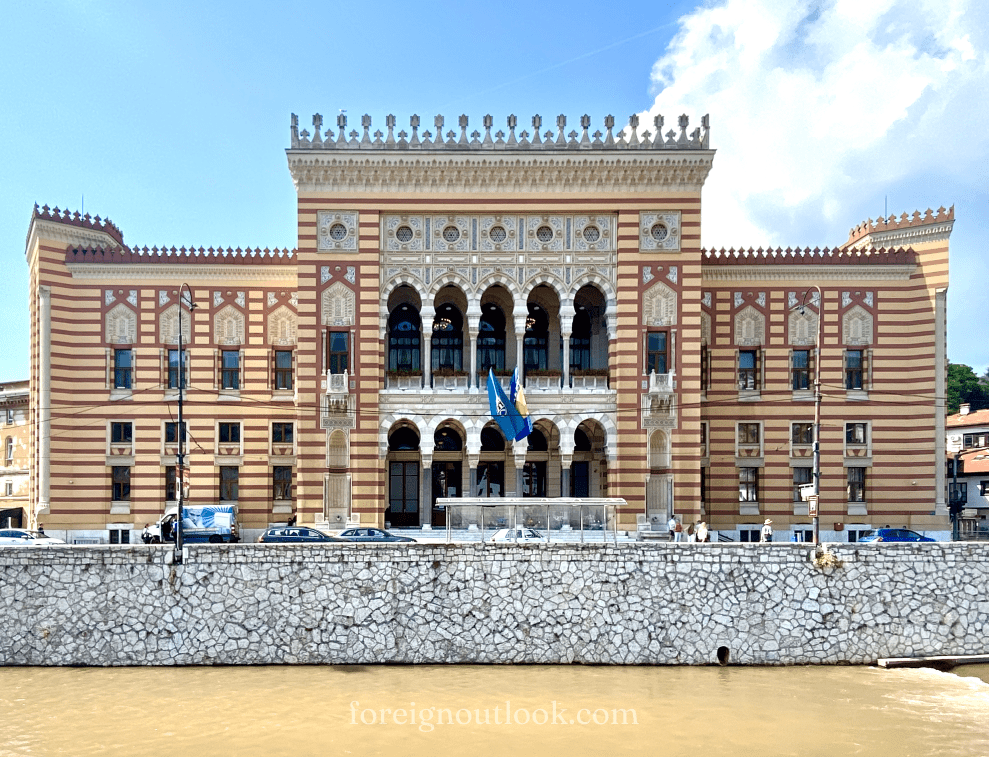
In 1992, during the Bosnian War, the city hall’s library burned down due to Serbian shelling. Consequently, this destroyed most of the documents, manuscripts, and books inside. After several generous donations, however, the authorities managed to rebuild the building and restore its beauty.
2. Sarajevo’s Sebilj
Passing through the center, an 18th-century wooden fountain stands prominently, surrounded by an overwhelming flock of pigeons. Built by the Ottomans, it mimics Islamic architectural styles and ornamentation through the wood carvings and embellished dome.
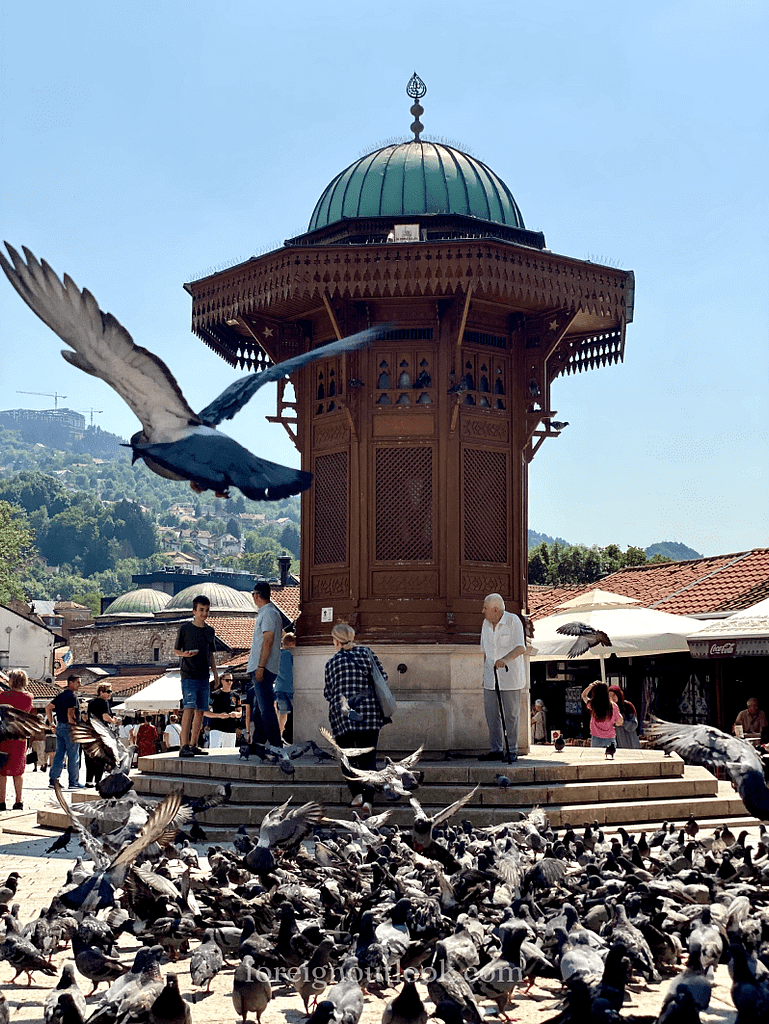
Along its circumference, delicate spouts offer fresh water to passersby. According to legend, those who drink from the fountain will one day return to Sarajevo. Naturally, this prompted me to take several refreshing sips before leaving to ensure I would again see this magnificent city!
3. Ottoman Architecture in Sarajevo
A bit further down, we passed by multiple mosques, hearing the daily prayers emanating from their tall minarets. While walking, collections of colorful domes could be seen between the rooftops on almost every corner.
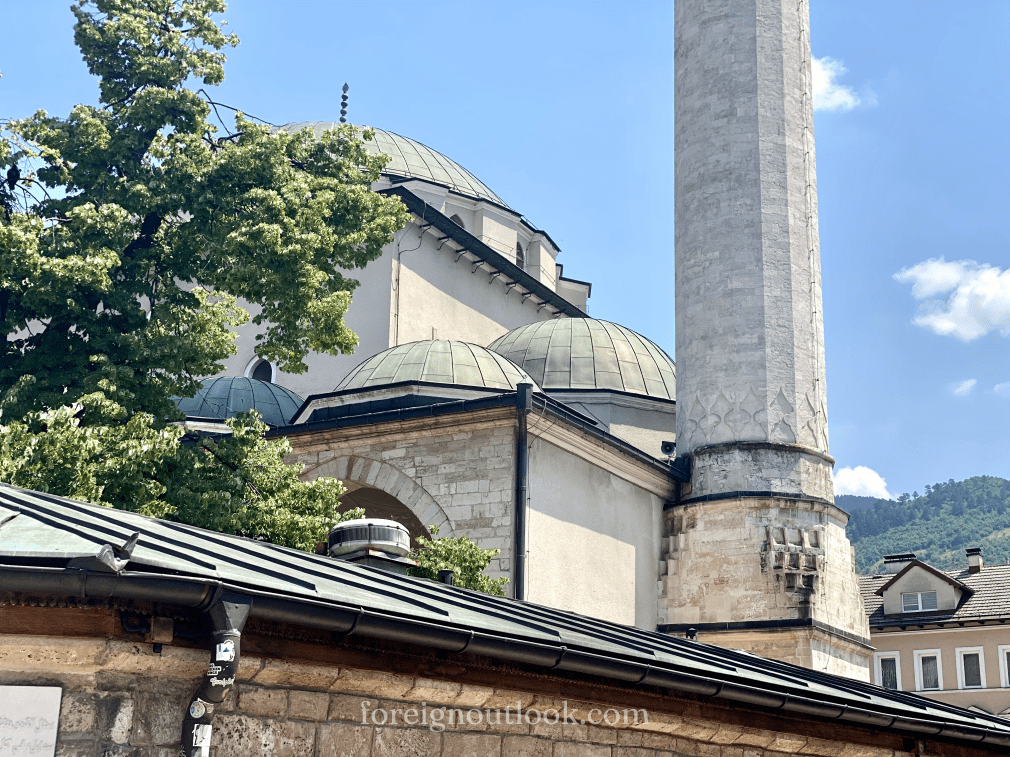
One that particularly stood out was the 16th-century Gazi Husrev-beg Mosque, the largest one of its kind in the country. Adorning its entrance was a beautiful wooden roofed fountain. The sound of trickling water complimented the calm atmosphere felt around this place of worship.
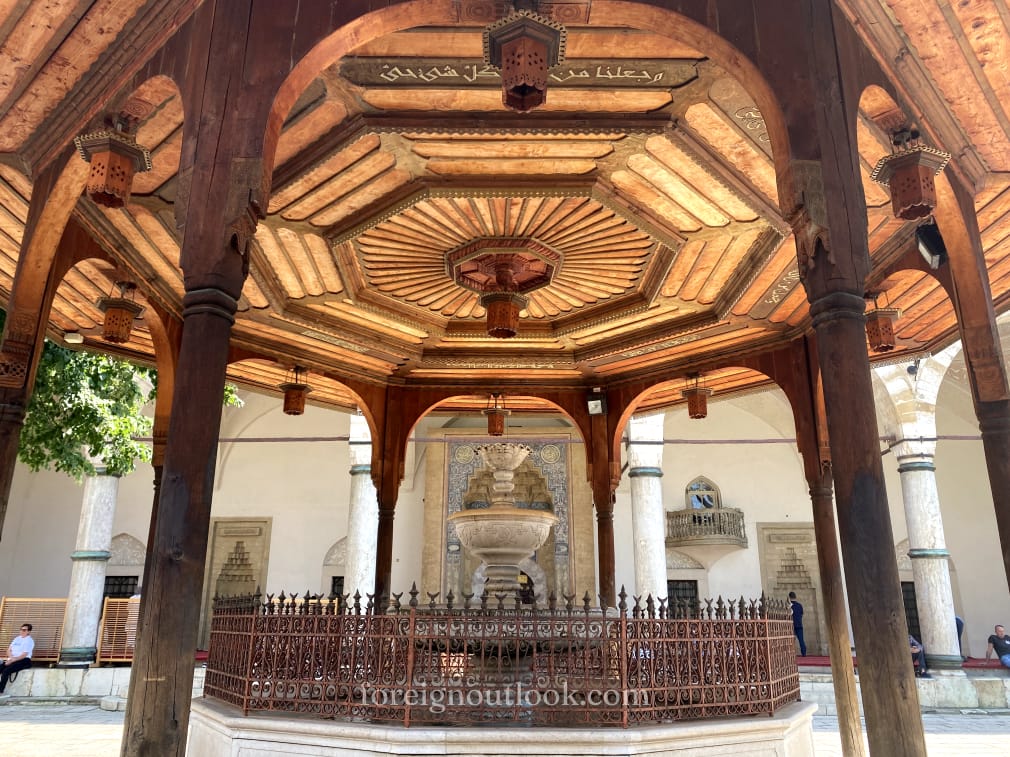
4. Academy of Fine Arts
At the opposite end of the capital, we later passed in front of Sarajevo’s majestic Academy of Fine Arts. Constructed in a Romanesque-Byzantine style, the building’s castle-like exterior showcases an impressive entrance guarded by pronged towers. Originally built as an evangelist church, it was the only one of its kind during the country’s occupation by Austro-Hungary.
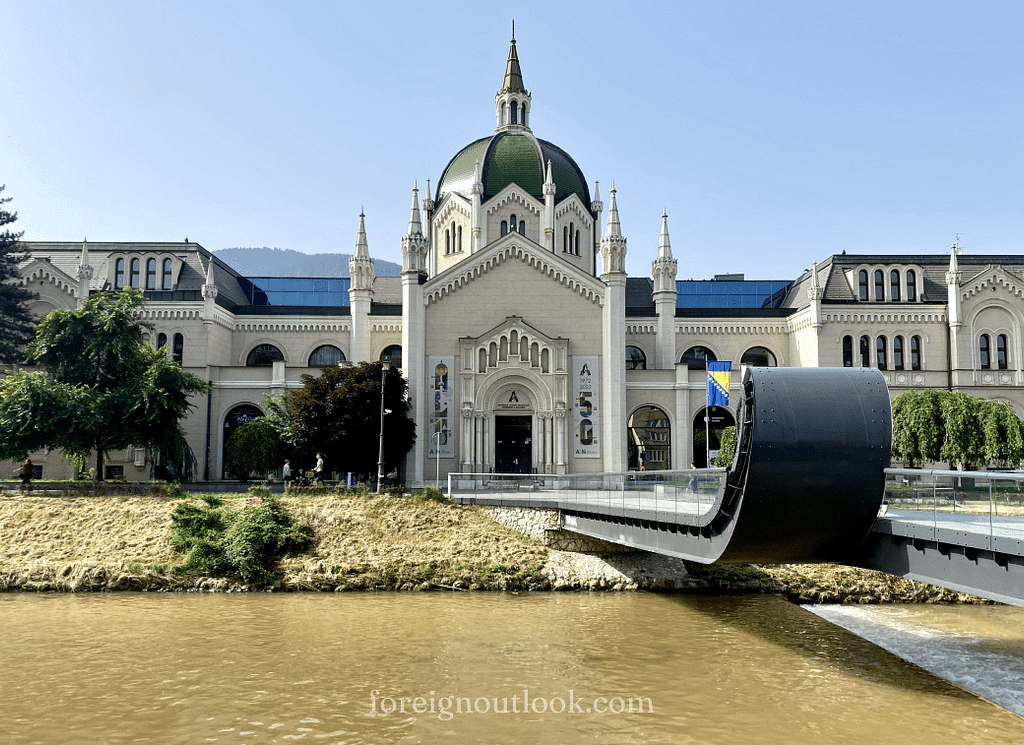
Crossing over the river was a particularly modern-looking looped pedestrian bridge that seemed to juxtapose the style of the academy behind it. On it, the Latin words Festina lente (“make haste slowly”) are inscribed, accurately reflecting Bosnia’s laid-back way of life. Despite the strange pairing, the landmark in the city’s outskirts stood out as one of the more memorable instances of beautiful architecture in Sarajevo.
Sources
“Vijećnica.” Wikipedia, en.wikipedia.org/wiki/Vije%C4%87nica.
“Sebilj in Sarajevo.” Wikipedia, en.wikipedia.org/wiki/Sebilj_in_Sarajevo.
“Academy of Fine Arts Sarajevo.” Website, en.wikipedia.org/wiki/Academy_of_Fine_Arts_Sarajevo.
